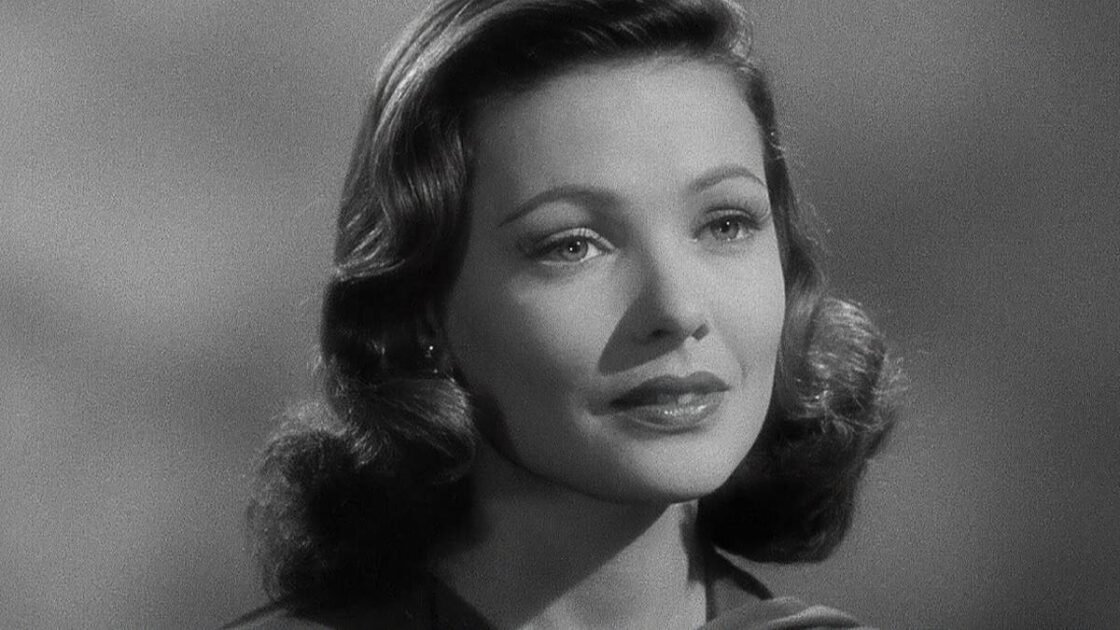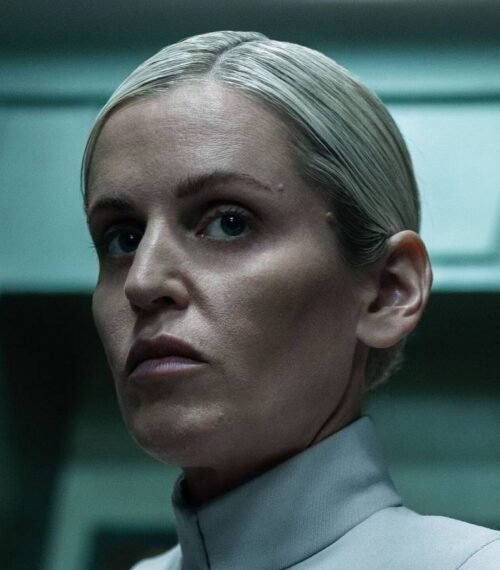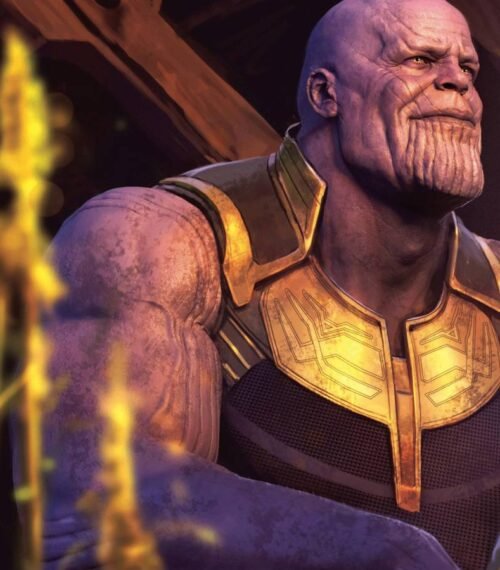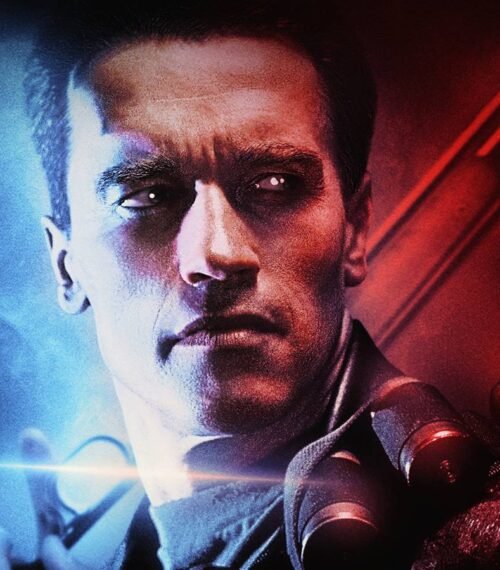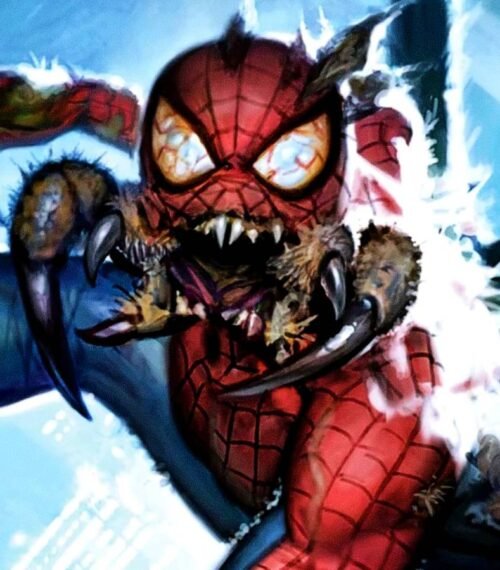Noir cinema is among the most distinct and instantly recognizable in the medium. Its standing is a matter of much debate — is it a proper genre or merely a stylistic approach? The answer perhaps lies somewhere in between because there are strong arguments for both. Noir movies stand out because of their cynical, pessimistic, melodramatic, and crime-centric thematic content, usually dealing with policemen, private investigators, or insurance men and featuring a classic femme fatale. They have their roots in German Expressionism and feature stark, striking yet understated black-and-white visuals.
Noir cinema was among the most defining of the 1940s and '50s, producing some of the period's most enduring and timeless classics and shaping the last two decades of Hollywood's Golden Age. As it would be expected, noir produced multiple worthwhile pictures, many of which have become integral to the very fabric of 20th-century cinema. Even for those who aren't particularly sold on this style's particular trademarks, the noir movies on this list are must-watches, and crossing them off their movie bucket list should be enough to get a comprehensive understanding of it. For simplicity purposes, this list will stick to pure noir movies and won't include any neo-noir movies (no Chinatown, for example) and will refer to noir as a proper film genre.
5 'Double Indemnity' (1944)

A woman in sunglasses and a man in a hat hide behind a bar in Double Indemnity, 1944.

A close up of Phyllis Dietrichson, played by Barbara Stanwyck, staring intently offscreen to the left and pressing some of her fingers together in Double Indemnity

Shadow of a man walking in Double Indemnity

Barbara Stanwyck standing behind a door as Fred MacMurray stands in the doorway in Double Indemnity.
-
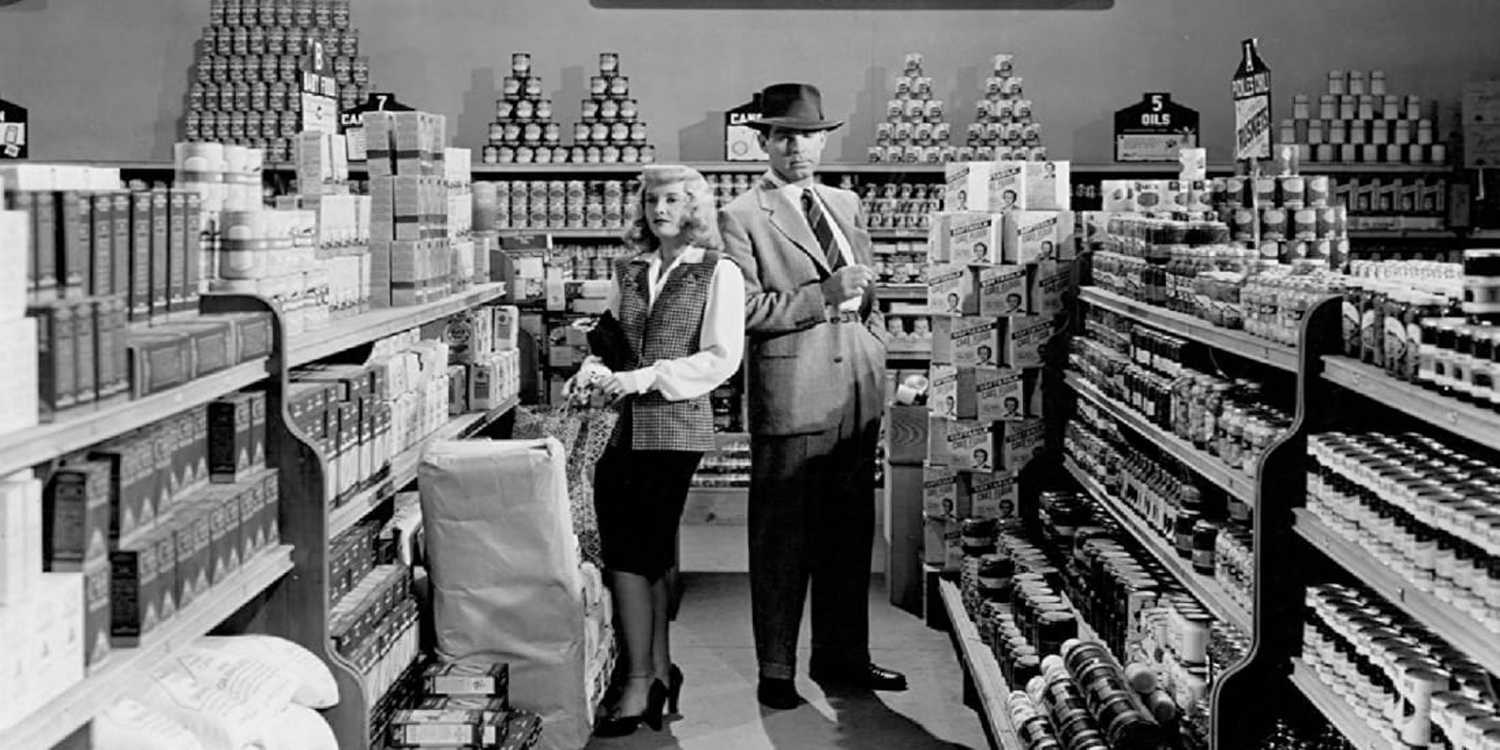
When one thinks of "film noir," a few movies will immediately come up, including Billy Wilder's masterpiece Double Indemnity. A career-best Barbara Stanwyck stars a Phyllis Dietrichson, a cunning and cold woman who manipulates insurance salesman Walter Neff (Fred MacMurray) into killing her husband so they can claim the insurance payment. Prompted by the man's daughter, PI Barton Keyes (Edward G. Robinson) begins looking into the crime.
Benefitting from its place as one of the earliest entries into the genre, Double Indemnity is the quintessential noir story. It has every major trope in the genre, from a morally ambiguous protagonist driven into perdition to an opening sequence featuring the story's ending to a challenging, bittersweet ending where everyone pretty much loses. Most importantly, Double Indemnity has the mighty Barbara Stanwyck as Phillys Dietrichson, cinema's greatest femme fatale by a mile. Phyllis is the blueprint for the archetype, and Stanwyck delivers one of her iciest and most magnetic performances as the cunning and seductive provocateur. Double Indemnity is noir incarnate, dripping with stylistic fatalism, half-hidden in enveloping shadows, and capturing the decaying, broken atmosphere that would make the genre shine.
4 'Laura' (1944)
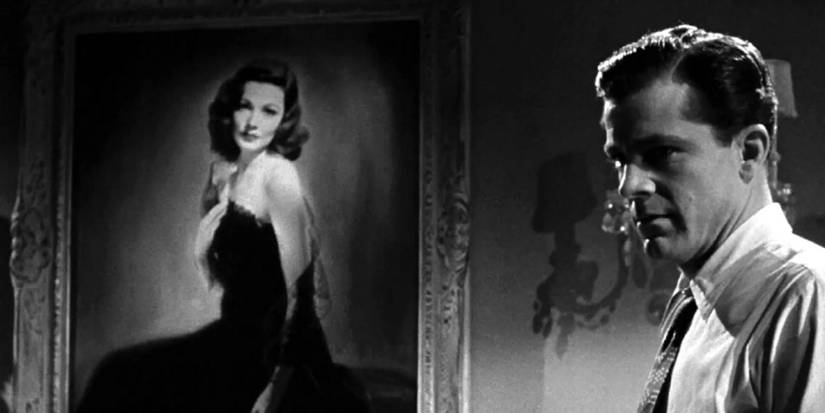
Marc McPherson (Dana Andrews) standing in profile in front of Laura Hunt's (Gene Tierney) portrait on the wall in Laura
Otto Preminger's Laura, based on the 1943 eponymous novel, is a staple of film noir. Dana Andrews stars as detective Mark McPherson, who is investigating the murder of Madison Avenue executive Laura Hunt (Gene Tierney). As he questions suspects, including Laura's best friend and finacé, Mark finds himself falling in love with a dead woman. Then, a twist changes everything.
Widely considered one of the all-time great noirs, Laura is a compelling and surprisingly audacious depiction of obsession. In a genre that too often was guilty of reducing its female characters to walking tropes, Laura stands out for its willingness to confront the very notion of a woman as an idea rather than a genuine human being. Tierney is as ethereal and alluring as the script demands her to be, but she brings layers to the character that perhaps wouldn't have been there without her. It also helps that the story is a near-perfect mystery, twisting and ever-changing, with a tightly constructed narrative that doesn't let go and dares audiences to look away for even a minute. Eighty years later, Laura remains a formidable murder-mystery, not to mention a fascinating depiction of obsession and the dangers of not seeing someone for who they are.
3 'The Third Man' (1949)
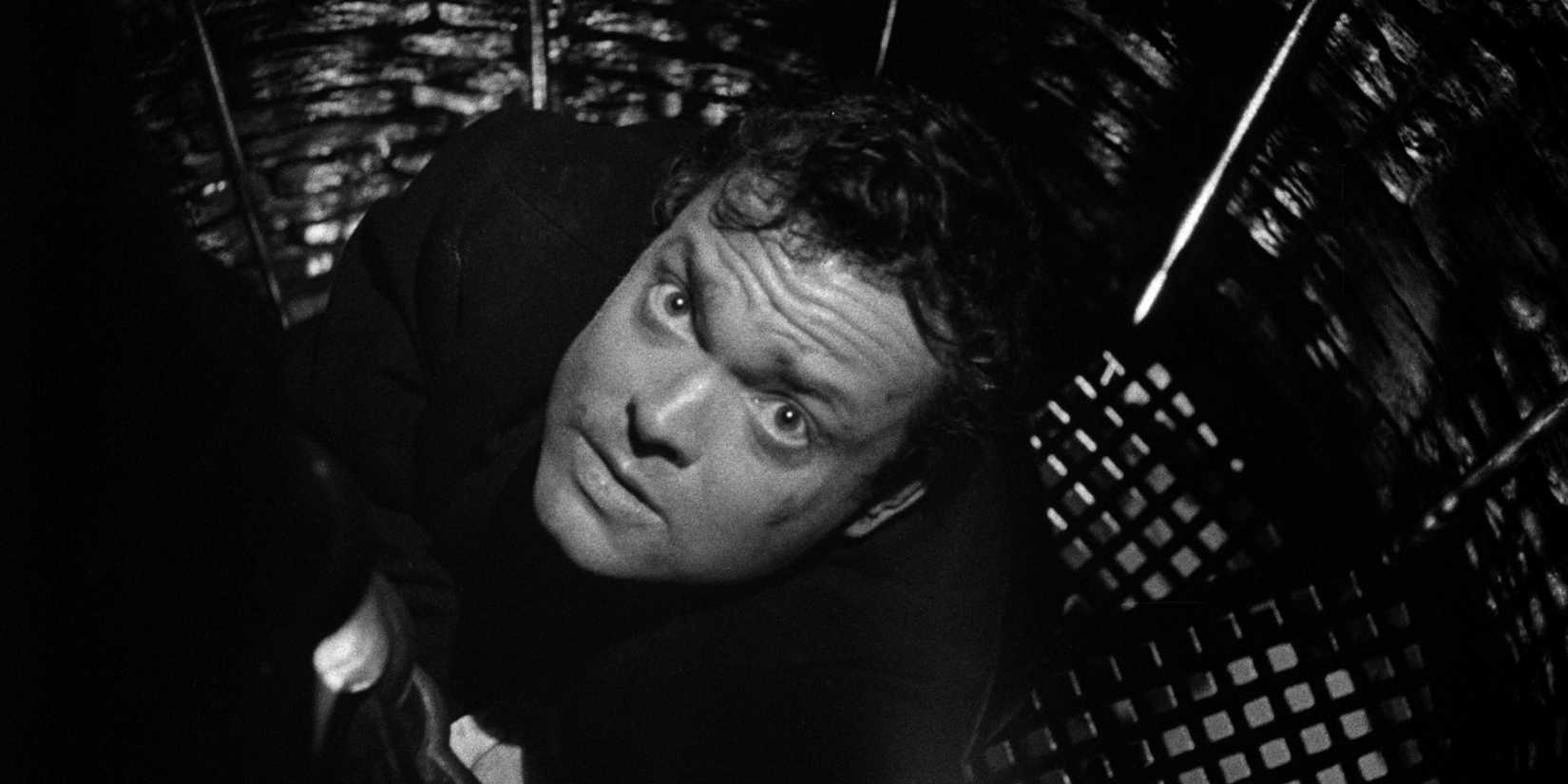
Harry Lime looking up with a scared expression in The Third Man.
In postwar, Allied-occupied Vienna, writer Holly Martins (Joseph Cotten) arrives to meet his childhood friend, Harry Lime (Orson Welles), only to find him dead. Suspecting foul play, Martins decides to stay in Vienna and further investigate the crime, soon meeting and falling for Lime's girlfriend, actress Anna Schmidt (Alida Valli). Such is the premise of Carol Reed's noir masterwork, The Third Man, one of the most renowned entries into the genre.
Deeply rooted in German Expressionism, from the Dutch angles to the striking, angular visuals and the exploration of the human psyche, The Third Man is among the best-looking noir movies, not to mention one that greatly basks in the genre's sensibilities. The plot and visual language are pure noir, filled to the brim with stylish choices, daring twists, and a deliciously deceitful narrative that enjoys toying with the audience. Arguably, The Third Man's strongest asset is Orson Welles as Harry Lime, one of classic cinema's greatest villains. Lime's now-iconic entrance is among the most enduring images in cinema, while his ironic "cuckoo clock" line stands as one of the most biting in film noir. Everything falls into place to produce a timeless hit, cinematic poetry that's cold, distant, and elusive as fog in the twilight.
2 'Sunset Boulevard' (1950)
Gloria Swanson gesturing dramatically in Sunset Boulevard
Perhaps the greatest satire of show business ever made, Billy Wilder's Sunset Boulevard is a true masterpiece of cinema, one of the all-time great productions from Hollywood's Golden Age and an enduring testament of the medium. William Holden plays Joe Gillis, a struggling screenwriter who stumbles upon the decaying Los Angeles mansion of former silent star Norma Desmond (Gloria Swanson). The two enter an arranged relationship, as he pretends to write a comeback vehicle for her while enjoying the benefits of her patronage.
Filled with quotable lines, memorable visuals, and one of cinema's most iconic endings, Sunset Boulevard is film noir's most enduring example, described by Time as "a story of Hollywood, mostly at its worst, brilliantly told by Hollywood at its best." The film is a perfect distillation of the genre's absolute cynicism, a tragic tale of broken, impossible dreams in a broken, impossible city that takes everything while giving nothing back unless you claw it out of cold, rigid hands. Everything about Sunset Boulevard is a stroke of artistic genius: the framing device of Joe's death, the biting, darkly comedic narration that expertly blends misery and sardonic irony, and, of course, Swanson's titanic, larger-than-life performance, the greatest depiction of an actress in mental anguish in Hollywood history. Sunset Boulevard is the rare movie that just keeps getting better, all while remaining timelessly relevant.
1 'The Night of the Hunter' (1955)
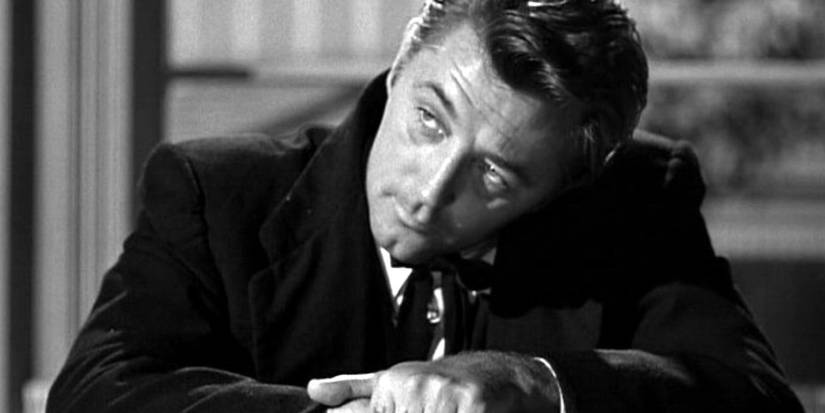
Robert Mitchum as "Preacher" Harry Powell looking up at a person offscreen in The Night of the Hunter.
Academy Award winner and character actor Charles Laughton directed only one motion picture in his life, and it just so happens to be the single greatest horror noir ever produced. The Night of the Hunter stars Robert Mitchum in arguably his best performance as Harry Powell, a serial killer posing as a preacher to get close to two children, aiming to get his hands on $10,000 of stolen cash hidden by their father.
"Chilling" barely begins to cover just how piercing The Night of the Hunter is, and it's all thanks to Robert Mitchum. The actor who Roger Ebert once called "the soul of film noir," Mitchum is tremendous as Powell, one of cinema's best and most terrifying villains. It helps that he has one heck of a movie around him; here, Laughton is juggling genres like a pro — part thriller, part psychological horror, and part noir, all drenched in stylistic Southern Gothic, The Night of the Hunter is a perfect balance of ideas executed with the eye of a director who wasn't fully aware of just how good he was. Like many works of genius, the film was misunderstood upon release, but time has rightly put it where it belongs: among the greatest movies of the '50s. A frightening study of the nature of good and evil and a powerful condemnation of religious hypocrisy, The Night of the Hunter is a true noir wonder.












































































































